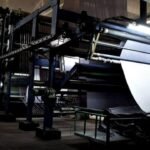By Moaaz Manzoor
Pakistan’s export landscape is changing fast, with the mineral and metal products (MMPs) sector emerging as a quiet powerhouse. The sector brought in USD 4.02 billion during FY2025, making up 13.1 percent of the country’s total exports — a promising sign for an economy trying to expand beyond its traditional export base.
Government Push for Smarter Export Policies
Under the Strategic Trade Policy Framework, the Ministry of Commerce has formed special councils for key export sectors, including rice and fisheries.
These councils are designed to bring together government officials and private exporters to shape better trade policies, ensure compliance, and find new global markets.
To make this collaboration more effective, the ministry regularly works with trade associations like the Rice Exporters Association of Pakistan (REAP) and the Pakistan Fisheries Exporter Association (PAKFEA).
These meetings help both sides identify problems and find quick solutions to boost exports.
Monitoring Trade Barriers and Protecting Export Flows
The ministry has also been keeping a close eye on non-tariff barriers (NTBs) — hidden trade restrictions that can make exporting harder. Officials are working with provincial governments and other agencies to prevent disruptions, especially in high-value destinations like the European Union and Gulf Cooperation Council (GCC) countries.
Pharma Sector Becomes a New Focus
Another fast-growing area is the pharmaceutical industry, which is now worth around USD 3.5 billion. The government is considering forming a separate export promotion council for pharmaceuticals to strengthen research and development in generic and biotech medicines.
Talks are also underway to bring in Saudi investment to help expand production and create export opportunities.
This approach seems to be paying off — the pharmaceutical sector grew by 34 percent during FY2024–25, reaching USD 457 million in exports.
Agro-Products Roadmap Moves Forward
The government’s Agro-Products Export Enhancement Roadmap, which was approved in August 2025 during a meeting of the National Export Development Board (NEDB), has now entered the implementation stage.
The roadmap sets detailed goals for value addition, quality compliance, and market expansion across major agro-based sectors like rice and fisheries. It will play an important role in shaping the upcoming Strategic Trade Policy Framework (STPF) 2025–30.
New Targets for Commercial Attachés
The ministry is also assigning performance-based targets to Pakistan’s commercial attachés abroad. These targets aim to make their work in market development more result-driven and measurable, ensuring that their efforts translate into real export growth.
Saudi Investment Seen as a Key Driver
Officials say the next phase of Pakistan’s export strategy will focus heavily on attracting Saudi investment into value-added sectors. Industries such as marble, granite, and pharmaceuticals are at the top of this list.
Pakistan has over 300 billion tonnes of marble and granite reserves. The government is planning joint ventures with Saudi partners to modernize mining and processing operations.
These partnerships are expected to increase production efficiency and raise the export of finished goods like tiles and slabs.
Building a Stronger, More Competitive Export Base
According to officials, all these measures are designed to make Pakistan’s exports more competitive, align with international quality standards, and support a gradual move toward higher-value manufacturing.
By improving coordination, encouraging investment, and promoting modern production methods, Pakistan hopes to strengthen its export base and open new opportunities in global markets.
Author Profile
-
Moaaz Manzoor is a business correspondent who meticulously tracks Pakistan’s crucial but neglected natural resource industries.
He specializes in exposing inefficiencies and charting the course of modernization, highlighting how efforts to mechanize mining have dramatically cut marble and granite wastage, driving a recovery and attracting vital investment.





